Related Research Articles

A frozen meal, prepackaged meal, ready-made meal, ready meal (UK), frozen dinner, and microwave meal) is ultra-processed food portioned for an individual. A frozen meal in the United States and Canada usually consists of a type of meat for the main course, and sometimes vegetables, potatoes, and/or a dessert. The main dish can also be pasta or fish. In European frozen meals, Indian and Chinese meals are common. Another form of convenience food, which is merely a refrigerated ready meal that requires less heating but expires sooner, is popular in the UK.

Danish cuisine originated from the peasant population's own local produce and was enhanced by cooking techniques developed in the late 19th century and the wider availability of goods during and after the Industrial Revolution. Open sandwiches, known as smørrebrød, which in their basic form are the usual fare for lunch, can be considered a national speciality when prepared and garnished with a variety of ingredients. Hot meals are typically prepared with meat or fish. Substantial meat and fish dishes includes flæskesteg and kogt torsk with mustard sauce and trimmings. Ground meats became widespread during the industrial revolution and traditional dishes that are still popular include frikadeller, karbonader and medisterpølse. Denmark is known for its Carlsberg and Tuborg beers and for its akvavit and bitters, but amongst the Danes themselves imported wine has gained steadily in popularity since the 1960s.

The J.M. Smucker Company, also known as Smuckers, is an American manufacturer of food and beverage products. Headquartered in Orrville, Ohio, the company was founded in 1897 as a maker of apple butter. J.M. Smucker currently has three major business units: consumer foods, pet foods, and coffee. Its flagship brand, Smucker's, produces fruit preserves, peanut butter, syrups, frozen crustless sandwiches, and ice cream toppings.
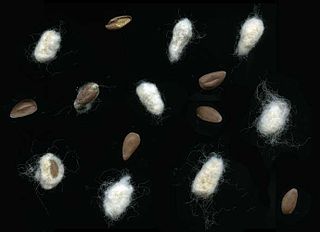
Cottonseed oil is cooking oil from the seeds of cotton plants of various species, mainly Gossypium hirsutum and Gossypium herbaceum, that are grown for cotton fiber, animal feed, and oil.
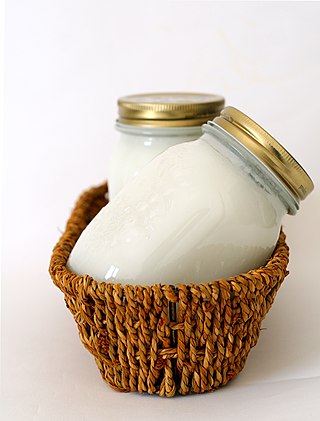
Shortening is any fat that is a solid at room temperature and used to make crumbly pastry and other food products.

Schmaltz is rendered (clarified) chicken or goose fat. It is an integral part of traditional Ashkenazi Jewish cuisine, where it has been used for centuries in a wide array of dishes, such as chicken soup, latkes, matzah brei, chopped liver, matzah balls, fried chicken, and many others, either as a cooking fat, spread, or flavor enhancer.
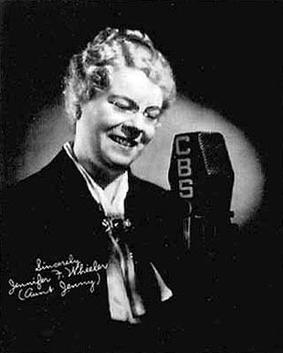
Aunt Jenny was an advertising character created for Spry Vegetable Shortening. Primarily portrayed by Edith Spencer, Aunt Jenny was best known as host and narrator of the long-lived radio show, Aunt Jenny’s Real Life Stories, but she was also seen promoting the product in drawings, photographs and cookbooks.
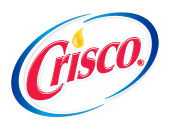
Crisco is an American brand of shortening that is produced by B&G Foods. Introduced in June 1911 by Procter & Gamble, it was the first shortening to be made entirely of vegetable oil, originally cottonseed oil. Additional products marketed under the Crisco brand include a cooking spray, various olive oils, and other cooking oils, including canola, corn, peanut, sunflower, and blended oils.

Tia Maria is a dark coffee liqueur made in Italy using Jamaican coffee beans, The main ingredients are coffee beans, Jamaican rum, vanilla, and sugar, blended to an alcoholic content of 20%.

A chiffon cake is a very light cake made with vegetable oil, eggs, sugar, flour, baking powder, and flavorings. Being made with vegetable oil, instead of a traditional solid fat such as butter or shortening, it is easier to beat air into the batter. As a result, chiffon cakes achieve a fluffy texture by having egg whites beaten separately until stiff and then folded into the cake batter before baking. Its aeration properties rely on both the quality of the meringue and the chemical leaveners.

Chocolate crackles are a popular children's confection in Australia and New Zealand, especially for birthday parties and at school fêtes. The earliest recipe found so far is from The Australian Women's Weekly in December 1937.

A fishcake is a culinary dish consisting of filleted fish or other seafood minced or ground, mixed with a starchy ingredient, and fried until golden.
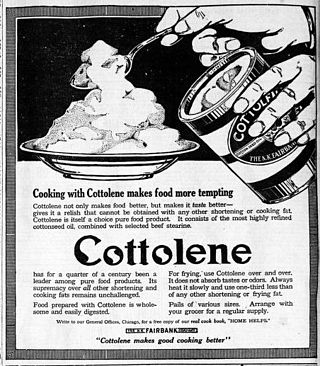
Cottolene was a brand of shortening made of beef suet and cottonseed oil produced in the United States from the late 1880s until the mid-20th century. It was the first mass-produced and mass-marketed alternative to cooking with lard, and is remembered today for its iconic national ad campaign and the cookbooks that were written to promote its use.
James F. Boyce was an American chemist who worked for the N.K. Fairbank Company of Chicago, a manufacturer of lard, cooking oils, soaps, and detergents. He helped create new washing products such as Gold Dust washing powder. Boyce pioneered techniques that are now used in the isolation and removal of consumable hydrogenated vegetable oils from plants. Later in life, he ran the Chicago Glass Novelty Company.

The KFC Original Recipe is a secret mix of ingredients that fast food restaurant chain KFC uses to produce fried chicken.

The old-fashioned doughnut is a term used for a variety of cake doughnut prepared in the shape of a ring with a cracked surface and tapered edges around it. Nineteenth century recipes for "old-fashioned donuts" are made with yeast, but in modern doughnut shops an "old-fashioned doughnut" is usually a cake doughnut. Cake doughnuts made with chemical leavener originated in the United States circa 1829. Primary ingredients in the old-fashioned doughnut include flour, sugar, butter, eggs, sour cream or buttermilk, and chemical leavener. It is typically deep fried, may have a crunchier or crisper texture compared to other styles of cake doughnuts, and typically has cracks and pores on its surface. After being fried, it is glazed, dusted with sugar, or served plain.
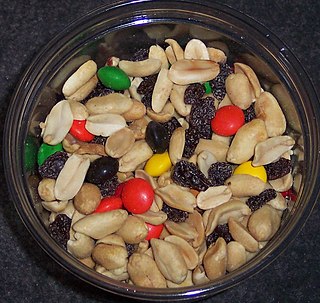
A snack is a small portion of food generally eaten between meals. Snacks come in a variety of forms including packaged snack foods and other processed foods, as well as items made from fresh ingredients at home.

Fat hydrogenation is the process of combining unsaturated fat with hydrogen in order to partially or completely convert it into saturated fat. Typically this hydrogenation is done with liquid vegetable oils resulting in solid or semi-solid fats.
References
- ↑ James Lileks The Gallery of Regrettable Food (2001, ISBN 0-609-60782-0)
- ↑ "Favorite Recipes of the Aetna Girls, August 1975" [Issued by the Toledo, Ohio office, Bayer & Associates.]
- ↑ "Toward Evening" by John Updike, New Yorker magazine, Feb. 11, 1956; "The Rivermen" by Joseph Mitchell, April 4, 1959; "Spry for Frying" by Lore Segal, April 18, 2011,
- ↑ June 28, 1958
- ↑ "Spry Φυτικό Βούτυρο 350Gr". supermarketcy.com.cy (in Greek). Retrieved 2022-01-06.
- ↑ "UK television adverts 1955–1990" at headington.org.uk